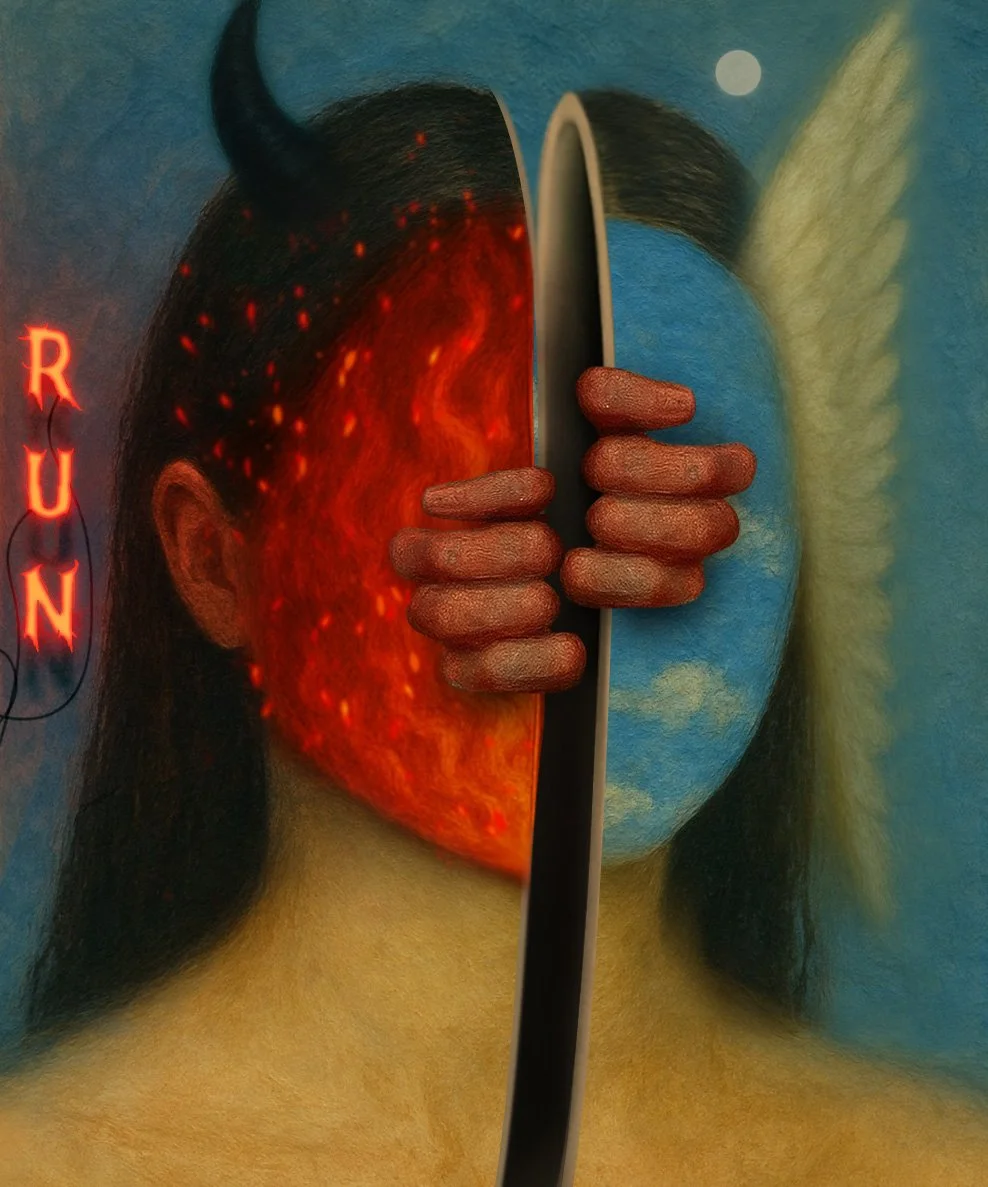The Great Louvre Heist and the Price of Beauty
Guilty…. It was me lol
The Crownless Empire
Greetings Warriors!
Paris — October 19th, 2025.
The Louvre slept beneath a velvet sky, her marble corridors quiet, her treasures breathing in the dark. But sometime between the silence of midnight and the pale blue of dawn, a new kind of masterpiece unfolded — one painted not with brushstrokes, but with precision, nerve, and darkness.
In less than eight minutes, thieves breached one of the most guarded institutions in the world and stole what no artist could ever recreate: fragments of France’s soul.
They came for the jewels — the crown pieces once worn by queens and empresses, relics of Napoleon’s ambition, and symbols of a nation’s gilded history. The theft was swift, surgical, and deeply humiliating for a museum that had survived wars, revolutions, and centuries of greed.
When the curators arrived that morning, the Galerie d’Apollon — that celestial hallway of gold and glass — looked like a battlefield after the storm. Display cases shattered. Silence heavy. Empty pedestals where once brilliance reigned.
Eight to nine pieces of the French Crown Jewels — gone. Just like that.
The estimated worth: more than €88 million, though in truth, the value of beauty stolen from history cannot be measured in currency.
The Priceless and the Unprotected
The jewels weren’t just stones. They were relics of empire — tokens of France’s relentless flirtation with power and divinity. Among them: brooches, necklaces, and tiaras crafted for queens, infused with the arrogance of immortality.
But immortality is fragile in the hands of man.
As investigators pieced together the timeline, the truth grew colder. The theft was not born of chaos or protest. It was a professional heist, meticulously planned and executed. Surveillance cameras had been disabled moments before the break-in. Guards were misdirected. Entry points exploited with an elegance that mocked the very institution they targeted.
By morning, the jewels had vanished into the underworld — perhaps disassembled already, their diamonds melted into anonymity, their gold melted into silence.
What remains is irony: these treasures survived revolutions, wars, and royal executions, only to be undone by modern neglect and arrogance.
How does an empire lose its crown?
Not through conquest — but through complacency.
Get two custom AI Art created by yours "King Romulus" truly every month. Uniquely crafted, with expressive quotes that dive deep into my subconsciousness. One of the art pieces will be posted on my Instagram account as well. Live through art history in the making!
The Empire’s Crown Falls
The French Minister of Culture called the heist “an attack on our shared heritage.” The President of France himself spoke of shame and sorrow. Even the director of the Louvre was summoned by lawmakers to explain how the fortress of art became vulnerable to thieves.
But this is not just France’s loss. It is civilization’s mirror.
The Louvre — the same institution that houses the Mona Lisa, that guards Michelangelo’s Slaves, that shelters the Winged Victory of Samothrace — has always stood as a symbol of empire, order, and the illusion of permanence.
To steal from it is to strike at the mythology of control.
For centuries, the Louvre has represented humanity’s attempt to immortalize beauty — to trap it behind glass, catalog it, secure it, insure it, and display it. Yet in one autumn night, the truth was revealed: beauty cannot be caged.
It can vanish.
It can be taken.
It can bleed.
And perhaps, that is its truest nature.
The Anatomy of a Heist
Investigators called it “a symphony of silence.”
The thieves struck between camera loops. They moved like ghosts. No alarms triggered, no guards alerted until the job was already done.
Inside the Galerie d’Apollon — itself a crown jewel of architecture — the culprits went straight for specific vitrines containing the royal collection. They knew exactly what to take, and what to leave behind.
It was not vandalism. It was precision.
The police believe at least four suspects were involved — professionals, perhaps with inside information. INTERPOL has since listed the stolen items in its Stolen Works of Art database, an international alarm that rings across borders.
But what alarms can truly summon back the sacred?
Even if the jewels are found, they will return changed — desecrated by the touch of those who saw them not as history, but as opportunity.
The French government later admitted that the jewels were uninsured — a detail that, while practical in the context of national treasures, has become a public symbol of hubris.
Empires rarely believe they can be robbed. Until they are.
The Echoes of Greed
Art theft has evolved.
Gone are the days of stolen Monets hidden in mansions or Picassos traded in smoke-filled rooms. Today, thieves prefer the portable — gold, gems, items that can be melted, erased, reborn in the black market.
Paintings speak too loudly.
Jewels can be silenced.
The Louvre heist fits a larger pattern — one where art crime is not just about money, but about rebellion against the structures that define value.
Collectors once hoarded paintings as investments, galleries paraded vanity as virtue, and nations built cultural empires out of plunder.
Now, the thieves take their turn.
In a strange way, the heist is a mirror of our time.
We’ve built a global art economy obsessed with possession, with owning what cannot be owned. From NFTs to billion-dollar auctions, the art world became a game of symbols — detached from meaning, soaked in speculation.
And so, when the Louvre was robbed, it wasn’t just France that was exposed — it was the illusion of stability that cracked.
Just as I wrote in The Storm Hits the Art Market: The Great Unraveling — the empire of art commerce is collapsing under its own grandeur. The Louvre heist is simply its echo in gold.
Shameless plug 🤣 My own AI art for sale$$$
The Silence After the Storm
Weeks after the theft, the Louvre stands quieter than before.
Tourists still flood the halls, but something intangible feels missing — not just the jewels, but the aura of invincibility.
You can feel it in the air.
A museum that once represented eternal preservation now carries the faint scent of loss.
Curators have spoken of “tightened security” and “renewed protocols.” But no amount of digital surveillance can protect art from the fragility of human systems — or the deeper truth that nothing, not even beauty, is ever safe from time, envy, or neglect.
The question now is not just who stole the jewels, but what else has been lost along the way.
Trust. Reverence. Belief in the sanctity of museums as untouchable cathedrals.
We once thought the Louvre was the safest place in the world for beauty.
Now we know — there is no such place.
The Warrior’s Reflection — The True Price of Beauty
When I think of that night, I don’t see thieves in masks or guards asleep at their posts.
I see an empire — centuries of cultural arrogance — finally confronted by its own reflection.
The Louvre was built to immortalize art, to house relics of conquest, to say: “Here is civilization.”
But in the end, beauty remains loyal to no one.
It can live in a diamond or a street mural, in a painting or a soul.
It does not serve nations, nor collectors, nor kings.
The stolen jewels remind us that possession is temporary, but meaning is eternal.
That’s the paradox every artist and collector must face: you can guard beauty, but you can never own it.
The Louvre heist, then, is not just a crime.
It’s a message.
A reminder that everything we build to contain wonder eventually crumbles under the weight of our desire to control it.
The empire has lost its crown — but perhaps that’s not tragedy.
Perhaps it’s freedom.
Because when the crown falls, the head beneath it remembers it is human again.
And maybe, just maybe, this theft — this wound — will spark a return to humility in art, to authenticity, to purpose.
The jewels are gone, but beauty remains.
Not in vaults or vitrines, but in the act of creation itself.
So I say this to my fellow Warriors of Art:
Do not fear the theft of treasures.
Fear the theft of meaning.
For beauty, when stripped of its price tag, becomes invincible again.
Vosoughi, Run! - 2025













